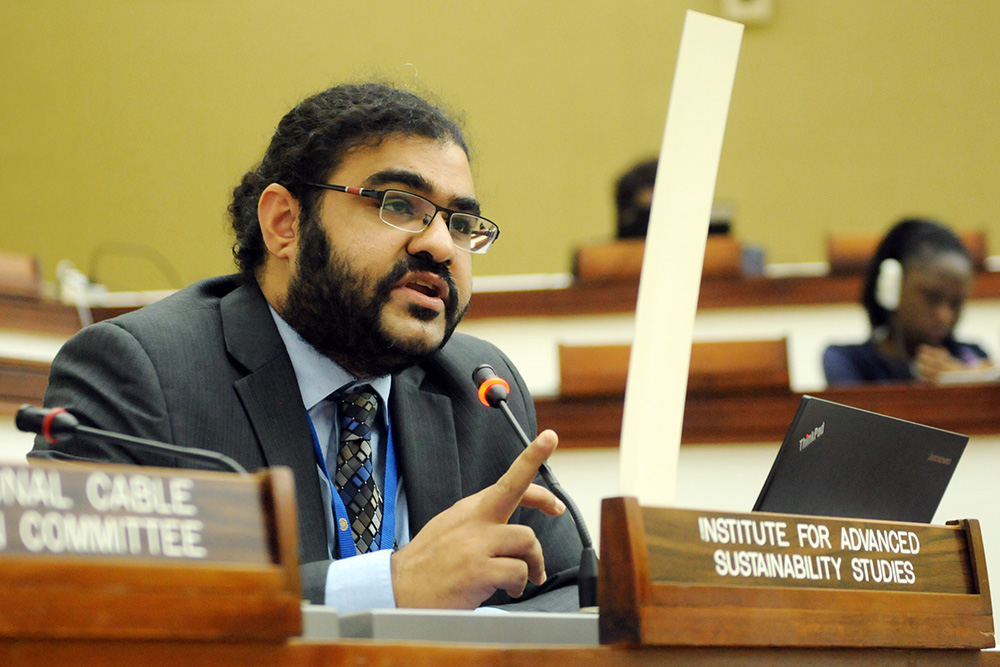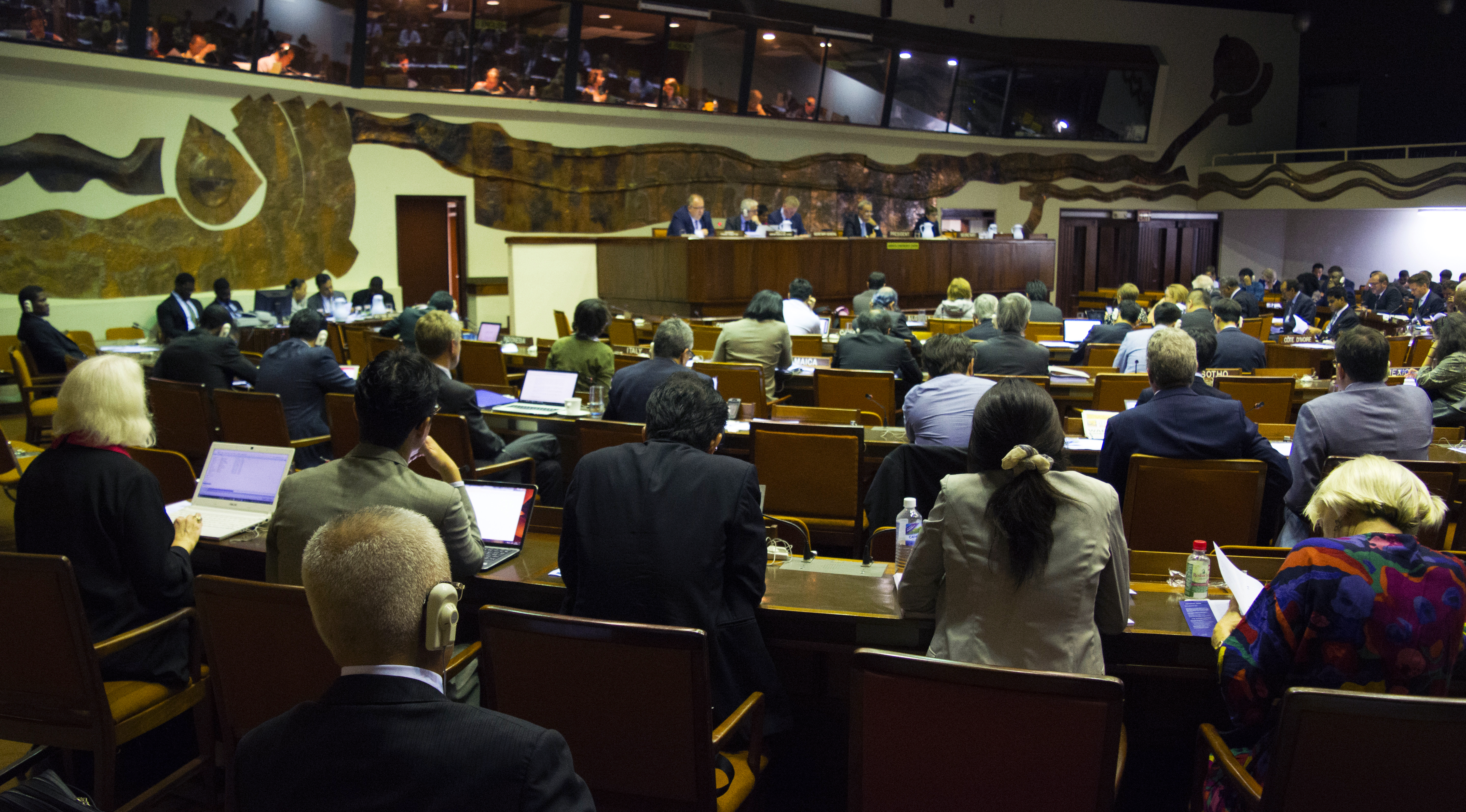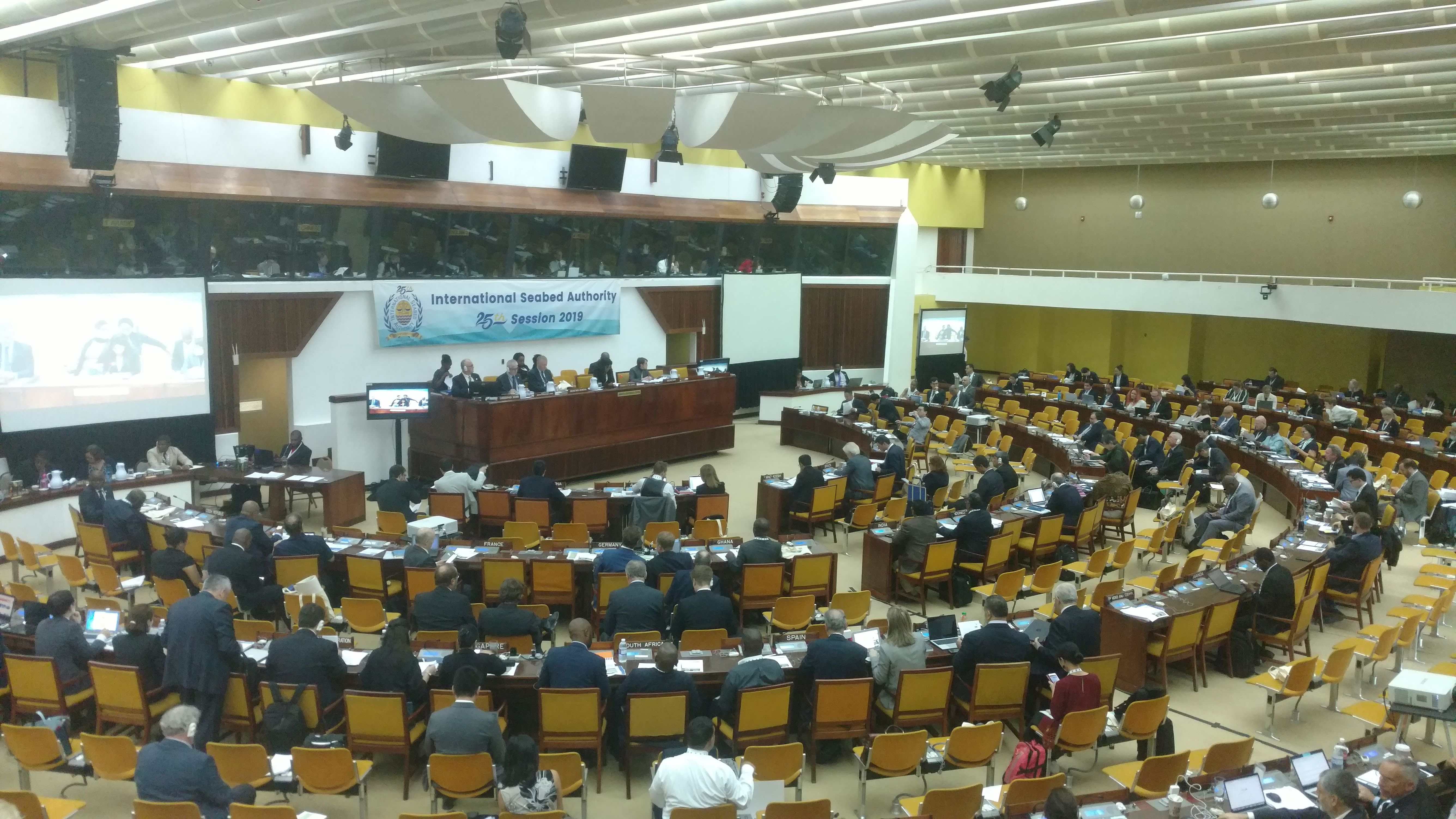Pradeep A. Singh
Pradeep Singh is a research associate at the Institute for Advanced Sustainability Studies (Potsdam, Germany) and doctoral candidate at the University of Bremen (Bremen, Germany). The views expressed here are his own and are partly based on his ongoing doctoral research.
The composition of members at the Legal and Technical Commission (LTC) has been a topic of longstanding uneasiness at the Authority. While the size of the LTC has consistently increased from cycle to cycle, as reflected in a report by the Secretary-General in 2016 (ISBA/23/C/2), it appears that the diversity in its expertise has not improved (and in some cases, the disparity is glaring). Further, it is apparent that some regional groups have dominated the membership of the LTC at the expense of others.
With Council members struggling at the outset of the February 2020 meeting – as before – to determine how the three components of LTC membership (i.e. required expertise, equitable geographic distribution and special interests) should converge, the Council opted to head into informal negotiations, facilitated by Mr. Vladislav Kurbatskiy (Russian Federation). This eventually led to a Council decision (ISBA/26/C/9), whereby the Facilitator was tasked to look into the matter further through intersession work, and provide a proposal with a mechanism that addresses all three components in a manner that is amenable to all Council members.
The Facilitator provided his initial draft proposal of a mechanism for the election of LTC members in April 2020, soliciting comments only from Council members until May 2020 (i.e. non-Council members have not been included), and is scheduled to deliver a revised proposal in June 2020. The Council will then consider the revised proposal, with a view for adoption at its next meeting. In the light of the ongoing COVID-19 crisis, the Authority very recently announced the postponement of the annual session in July, which will now take place in October and in a reduced format.
In his proposal, the Facilitator suggested that the size of the LTC be maintained at 30 members. The Facilitator also noted that the type of expertise required for the next cycle consists of five major categories, namely, earth sciences, engineering, environment sciences, law, and economy. However, the Facilitator was not able to provide an indication of an ideal number or percentage of members that should come within each category. Despite that, the Facilitator went on to propose a mechanism that seeks to “combine all elements” (which is reference to the necessary expertise, equitable geographic distribution and special interest) in a two-fold manner, i.e. by:
- establishing “a maximum limit of nominated experts for each regional group and special interests”; and
- requiring each regional group to present “at least one representative from [the abovementioned] expert category needed for the composition of the LTC”.
While the efforts by the Facilitator to try to come up with a model that may be amenable to most Council members is greatly valued, there are several flaws in the proposed modality.
First, the proposal fails to appreciate the distinction between the nomination and the election of LTC members, as manifested in the 1982 UN Convention on the Law of the Sea (UNCLOS). UNCLOS makes a clear distinction between the nomination phase and the election phase. Article 163(2) stipulates that LTC members shall be “from among the candidates nominated by the States Parties”; and clearly not from among candidates nominated by regional or special interest groups. Article 163(3) further provides that “States Parties shall nominate candidates of the highest standards of competence and integrity with qualifications in relevant fields so as to ensure the effective exercise of the functions [of the LTC].”
By proposing that nominations are to come from the regional groups and special interest group instead, the Facilitator’s model seems to contradict UNCLOS. If nominations are conducted through regional groups, there is a real risk that State Parties may not be able to field a candidate of their choice, whether by compromise or because of undue pressure (since the Facilitator’s model imposes maximum nominations limits on regional and special interest groups).
Moreover, the need to consider equitable geographical distribution and special interests only comes later, i.e. at the election phase. Article 163(4) confirms this: “In the election of [LTC members], due account shall be taken of the need for equitable geographical distribution and the representation of special interests”. Hence, it is submitted that the regional or special interest groups should not play a role at the nomination phase (although the said groups should not be prevented from coordinating among themselves if they so desire), and that their concerns should only be ascertained and addressed post-nominations.
Second, the Facilitator’s proposal seems to bring the considerations of “equitable geographic distribution and representation of special interests” at par with necessary expertise. The provisions cited above clearly prioritize the need for experts of the highest standards, in order to ensure that the LTC is capable of carrying out its functions. This is also confirmed in Article 165(1). Thus, UNCLOS clearly gives prominence to expertise, but inserting considerations to take “due account” of the remaining two components in order to ensure broad representation, thereby ensuring widespread acceptance to the process and legitimacy to the outputs of the LTC. The Rules of Procedure of the Council neatly captures this, in Rule 72, as follows:
“In the composition of subsidiary organs, emphasis shall be placed on the need for members qualified and competent in relevant technical matters dealt with by those organs, provided that due account shall be taken of the principle of equitable geographical distribution and of special interests.”
Third, in an attempt to ensure the ‘representation of special interests’, the Facilitator’s model allocates two seats to the ‘special interest’ group. The Facilitator does not elaborate on this group, but this is presumably a reference to Group D of the Council (where six different types of special interests are recognized)[1]. The Facilitator does not explain as to whether the nomination for those two seats should come from among the six members in Group D, or whether the six members in Group D should solicit nominations from all Member States that meet the requirements of the said group. It is noteworthy, however, that the number of States that meet the requirements of Group D is approximately 100 (as indicated by the Secretariat in 2016 via document ISBA/22/A/CRP.1, Annex II). In any event, adding this group into the equation would appear to over-complicate things unnecessarily, and could lead to further division at the Council.
Therefore, some modifications to the Facilitator’s proposal would be necessary to alleviate the concerns highlighted above and to bring the election mechanism in line with UNCLOS. As a way forward, the author suggests the following adjustments to the Facilitator’s model:
One, the prerogative of all member States to make nominations should be respected. The need for nominations to be based solely with the aim of ensuring that the appropriate expertise are represented at the LTC, which is given pre-eminence by UNCLOS, should also be given effect. The call for nominations should be made approximately 15 months prior to an election, and member States be given at least two months to make their nominations.
Two, the concerns of equitable geographic distribution and representation of special interests should only come into consideration after the nomination phase. In this regard, once the deadline for nominations have passed, the Secretariat should compile a list of the nominations received in a report. In addition to listing the nominees, this report should provide breakdowns based on the types of expertise, as well as an identification of the regional groups from which the State Parties making the nominations belong, and a further determination as to whether they belong to a special interest group. Ideally, this report should be made available at least 12 months prior to an election. Only thereafter should the regional groups enter into the picture, to wit, to scrutinize the nominations. This is to be approached first with a view to ensure that the size and necessary expertise of the LTC can be fulfilled via the nominations received, and subsequently to ascertain whether “equitable geographical distribution and the representation of special interests” requirements are met, should the candidates be elected as per nominations. Following this, regional groups can enter into informal negotiations with each other, presenting their respective views and concerns, and thereupon seek to achieve consensus with respect to the upcoming elections. If Council members fail to achieve consensus, the process for voting to elect members of the LTC entails meeting a high threshold, thereby ensuring that most Council members will have to be in favour of electing a particular candidate. In this regard, Rule 77(3) of the Rules of Procedure of the Council stipulates that such decisions “shall be taken by a two-thirds majority of members present and voting, provided that such decisions are not opposed by a majority in any one of the chambers”.
Three, an optimal model should assume that the representation of special interests can (and will) be accommodated by the regional groups, as opposed to designating a group specifically for this purpose. Designating a group for this purpose will unnecessarily complicate matters. Moreover, it is important to note here that just three regional groups appear to form 95% of the community of member States that meet the requirements of “special interest” (see document ISBA/22/A/CRP.1, Annex II). In this regard, approximately 69% of GRULAC members, 76% of African Group members, and 84% of Asia and Pacific Group members meet the “special interest” requirements. In contrast, the Eastern European Group has three members that meet these requirements, while WEOG has just the one member.
Four, while there appears to be a way forward for Council members to ensure that the composition of the next LTC cycle would be amenable to them if the suggestions above are considered, it may be prudent to insert some added measure to ensure robustness and durability in the process. Here, instead of allocating maximum number of nominations to groups based on the determined size of the LTC (as proposed by the Facilitator), it would be more useful to add safeguards to ensure that not one particular regional group disproportionately dominates the LTC composition. Rather than putting all three components on the same level, any unfair disparity in the equation can be easily rectified by inserting a proviso. In this context, one can contemplate incorporating a proviso in the form of a general rule, which is based on the percentile of a regional group’s total membership at the Authority, considered in the light of allocated seats within the Council [2], whereby no one particular regional group should exceed when it comes to the election of LTC members. Such a proviso, for example, could impose limitations on elected members from the regional groups as follows:
- African Group: No more than 30% of elected members.
- Asia and Pacific Group: No more than 30% of elected members.
- GRULAC: No more than 25% of elected members.
- WEOG: No more than 25% of elected members.
- Eastern European Group: No more than 15% of elected members.
(Note: In the event a round figure is not obtained as a result of the calculation, the figure shall be rounded down to the lower number (e.g. 25% of 30 = 7.5, and therefore the limit of elected members from that regional group is set as 7 members).
It is important to emphasize that this proviso should function as a general rule of thumb, and Council members may decide to make concessions as and where necessary. This is particularly relevant if the nominations received are insufficient, or in instances where certain nominated candidates are not elected following a vote at the Council. In any event, if there remains any vacancies, the Council can always fill them at its next meeting – bearing in mind which regional group(s) has preference at the next meeting – as opposed to feeling compelled to elect all nominated candidates irrespective of regional groups.
Fifth, it is necessary to ensure that members elected to the LTC not only have no financial interest in activities in the Area, but that they also do not hold affiliations with existing or prospective contractors, in order to avoid any conflict of interest. This is not to mean that nominations from sponsoring states should be discouraged (about 40% of the current LTC members are from sponsoring states), but rather that State Parties should refrain from nominating candidates that are directly affiliated with or connected to contractors. As things stand, about one-fifth of the current LTC members appear to have affiliations with contractors. In addition, nominations from non-Council members should also be actively encouraged (only 20% of the current LTC members come from nominations made by non-Council members). Finally, it might also be necessary to ensure that the handful of State Parties that have consistently had a member nominated by them elected to the LTC in previous cycles to make concessions in favour of other candidates. This should especially be in the event where the number of nominations received exceed the number of the members required based on the predetermined size of the LTC.
In conclusion, one can only hope that when it proceeds to determine how expertise, equitable geographical distribution and special interests should ideally converge, that the Council does not inadvertently (or purposely) convert the LTC from a technical and expert advisory body into a political body, which will obviously impede its ability to deliver objective and impartial recommendations. On the contrary, it is the Council that is the political organ. Notwithstanding that, it is accepted that in order to ensure that there is trust and confidence in the process, it is crucial to ensure that any one group does not dominate the LTC, be it regional or special interests, and that the composition of the LTC is diverse and widely represented across the various groups. This is also true with respect to transparency and the manner in which the LTC carries out its responsibilities ascribed to it under UNCLOS (although this subject is beyond the scope of this commentary, since it does not relate to the topic of elections of LTC members). The LTC is the source upon which most of the Authority’s work emanates from, and most outputs produced by the Authority bear indelible marks that are traceable to the LTC. Therefore, LTC members have significant and heavy responsibilities. This is all the more reason why a technical advisory body like the LTC should be primarily driven by qualified and independent expertise that are drawn from all corners of the globe and from among the many members of the Authority, representing equitable geographic distribution and special interests.
[1] Section 3, paragraph 15(d) of the Annex to the 1994 Implementation Agreement on Part XI, where Group D shall comprise of: “Six members from among developing States Parties, representing special interests. The special interests to be represented shall include those of States with large populations, States which are land-locked or geographically disadvantaged, island States, States which are major importers of the categories of minerals to be derived from the Area, States which are potential producers of such minerals and least developed States.”
[2] Under this pathway, the computation accepts that African Group and the Asia and Pacific Group have the largest amount of members and are also allocated the most seats at the Council. Hence, it is expected that a slightly larger allowance be made for both groups. While GRULAC has more members of the Authority in total, WEOG has more allocated seats at the Council. As such, both groups are treated as the same, bearing in mind that GRULAC also comprises of a substantial number of States with special interests. Further, while the total number of members within the Eastern European Group almost equals to that of WEOG, the number of Council seats allocated to the former is much lesser, thereby justifying the limit imposed in this case. Lastly, special attention must be given to ensure that at least half of the LTC members that come from the African Group, the Asia and Pacific Group and GRULAC are from among their member States that meet the requirements of the “special interest” group.
Feature Photo: Pradeep Singh intervenes at the 26th ISA Council Meeting. Photo by IISD/ENB | Diego Noguera





